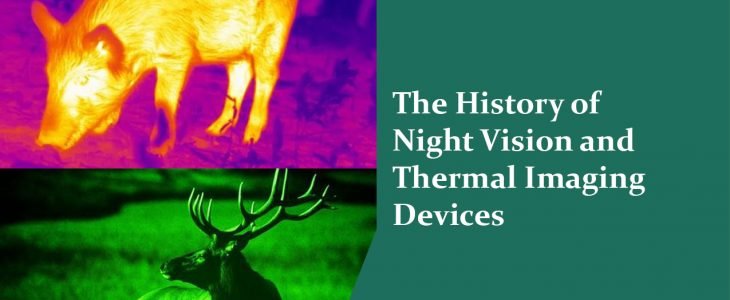
The prerequisite for creating night vision devices was the discovery in the 19th century of infrared (thermal) radiation. However, a device capable of “seeing” objects not in the optical (visible), but in the infrared (thermal) range of the spectrum was created only in 1934. This moment is considered to be the beginning of the era of night vision. The development of night vision devices can be divided into a number of stages, which are associated with the appearance of their specific generations.
Each subsequent generation was distinguished from the previous one by the following features:
-
greater range of vision,
-
better image quality,
-
reduced weight and dimensions,
-
increased operating time,
-
increased resistance to light noise etc.
The main feature that distinguishes between generations of night vision devices (NVDs) is their main element – an electron-optical converter (EOC), designed to convert an infrared image invisible to the eye into a visible one and enhance its brightness.
The first devices with a set of functionality, like thermal imagers, appeared back in the 30s of the last century and could make an electric signal from infrared radiation, and then output the received pulse to an indicator.
The technology was constantly evolving, and by the 60s, the first thermal imaging system had appeared, which had an optical-mechanical scanning of the field using an equipped lens. Such devices in maintenance were unpretentious but very slow. Therefore, temperature conditions were not monitored properly. Time passed, and thermal imagers appeared, assembled according to a modern scheme, and capable of real-time monitoring of temperature.
Main Difference Between Night Vision and Thermal Imaging Optics
Capability
Night vision devices amplify the image at very low brightness. They allow you to see the faint light reflected by objects from the moon, stars, or artificial sources.
A thermal imager is a device that visualizes thermal radiation. It allows you to see the temperature of certain areas of the object compared to neighboring, warmer, or colder.

Usage
Night vision devices are used to monitor and recognize objects and targets only at night. They are common in the armed forces, rescuers, security services, border guards while guarding sensitive facilities and open perimeters. And on the hunt, they are used to observe the behavior of animals, tracking the beast – at night. Especially relevant for the search for nocturnal animals – wild boar, bear, etc.
The thermal imager is independent of ambient light. It reacts to its radiation from objects, can work in complete darkness, twilight, or daylight. Snow, fog, smoke, grass, and shrubs practically do not interfere with observation. The device allows you to distinguish between equipment and people in camouflage, and animals against foliage or snow, regardless of natural camouflage.
How to Choose Proper Night Vision Rifle Scope According to Your Needs
Night vision sights are designed to monitor and conduct a targeted shooting at night and in low light conditions. The first of them is the caliber of your weapon. The first generation sights are not recommended to be put on calibers larger than 7.62×54 and smooth-bore weapons. This is associated with the risk of damage to the image intensifier tube due to the high shock load.
Sights of generation 2+ and 3 work freely on any hunting calibers. The second parameter is the generation of image intensifier tubes. The distance of observation depends on it. We recommend that you build on performance in the worst lighting conditions. For the first generation, the recognition distance can be taken as 50 meters, for 2+ about 200 m, for the 3rd generation of night sights – 400 m. Of course, the brand (manufacturer) of night vision sights plays a significant role in choosing, so I recommend that you turn to focus on our review of the Best Budget Night Vision and Thermal Scopes.

